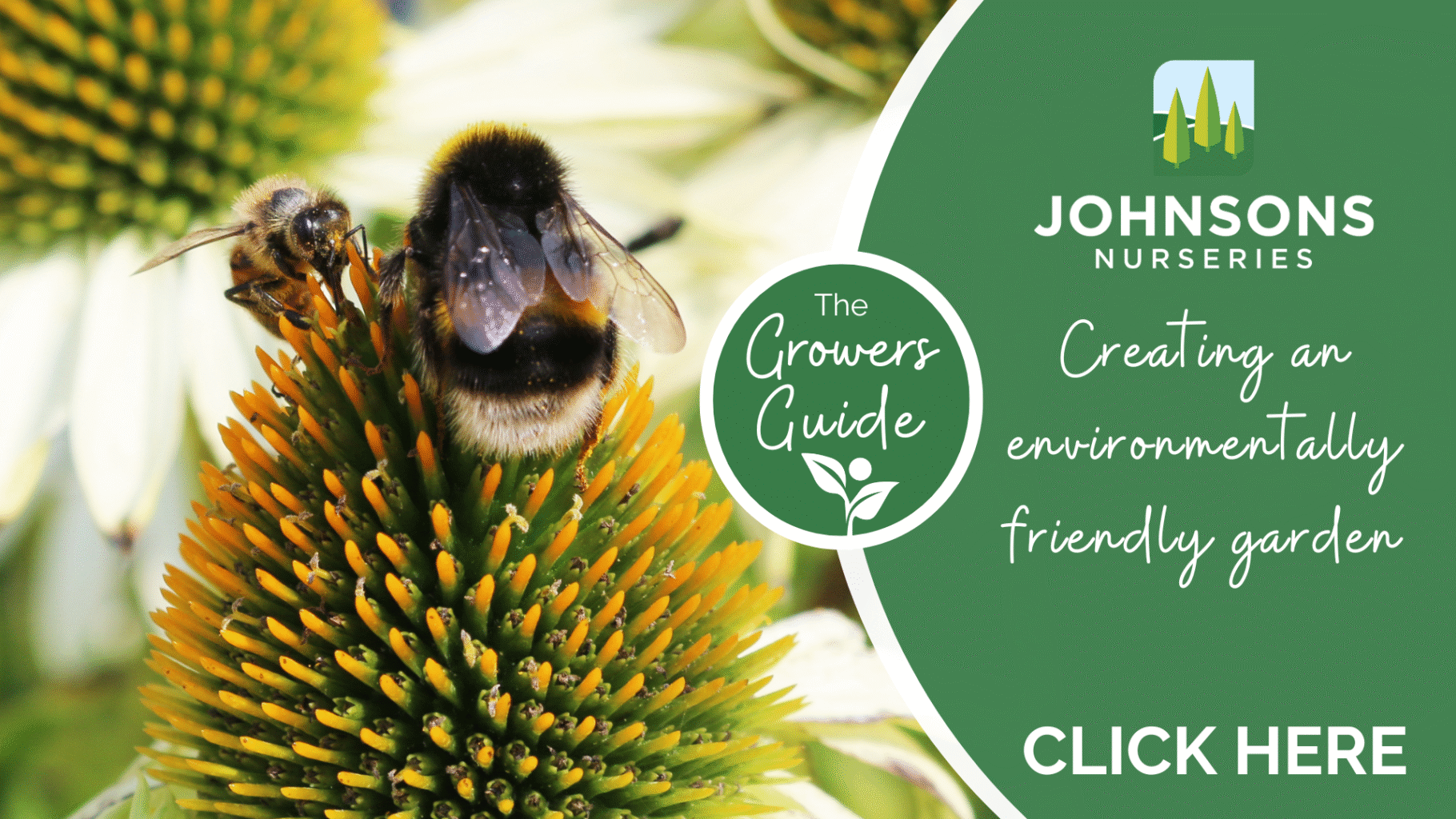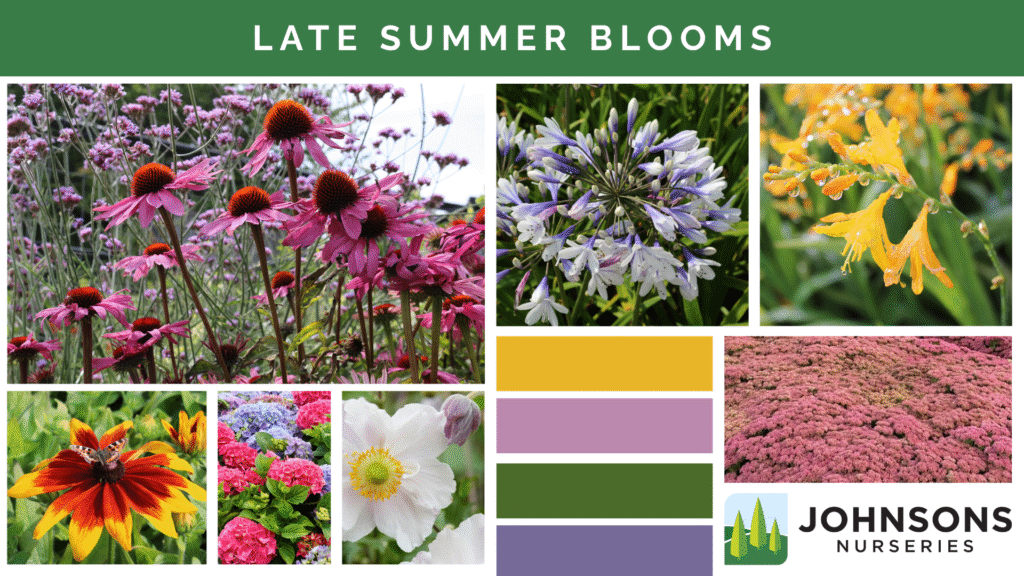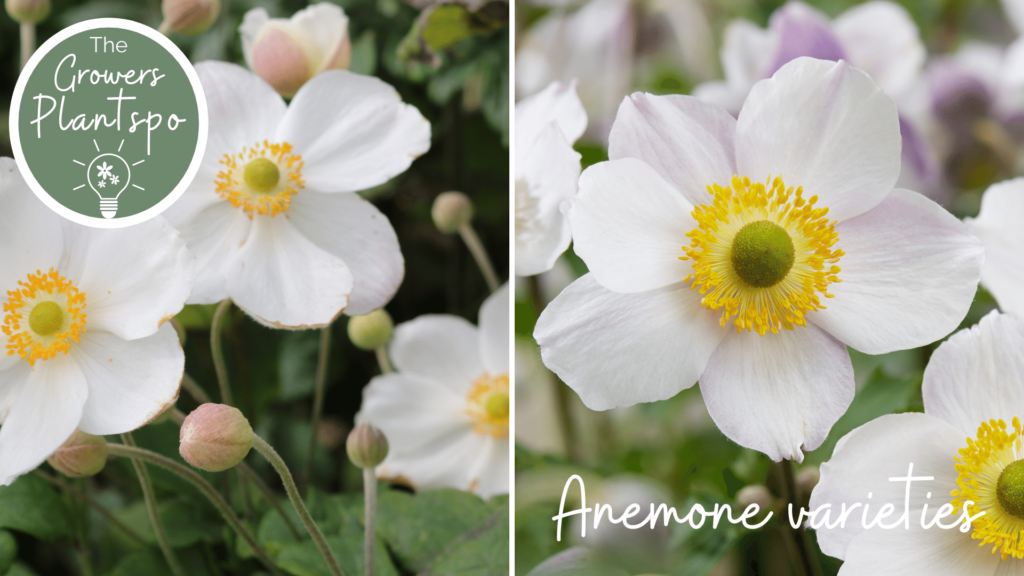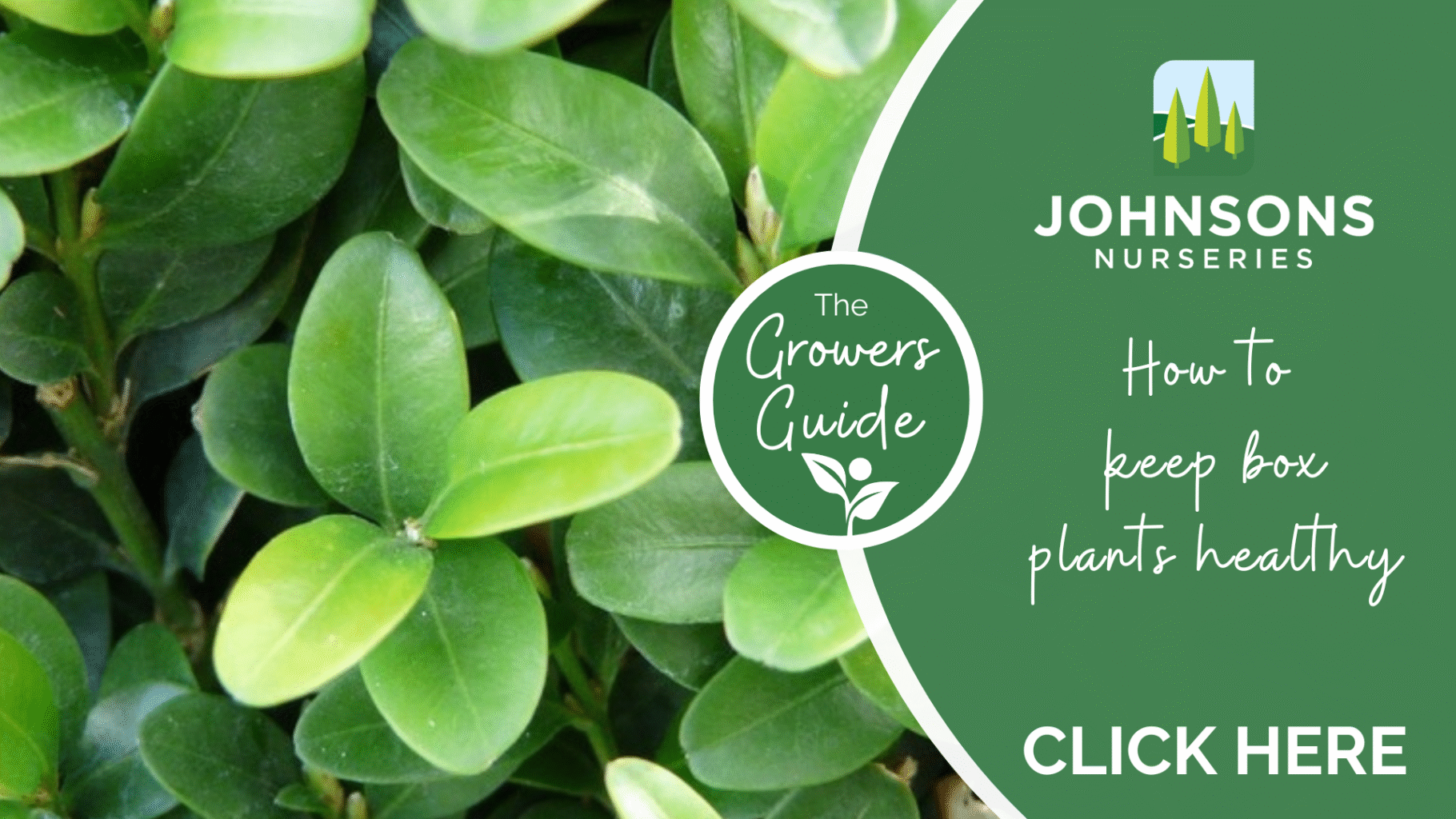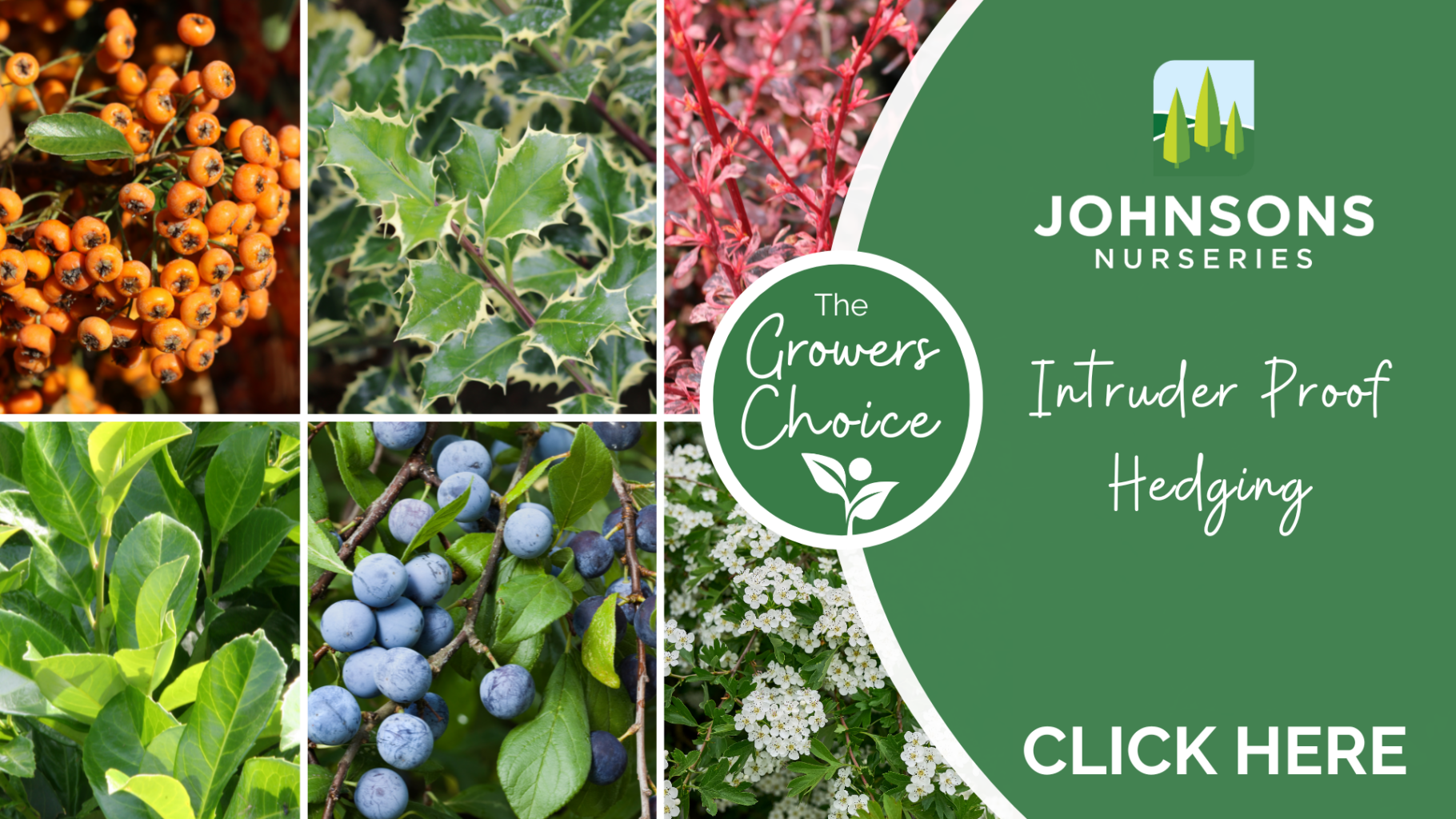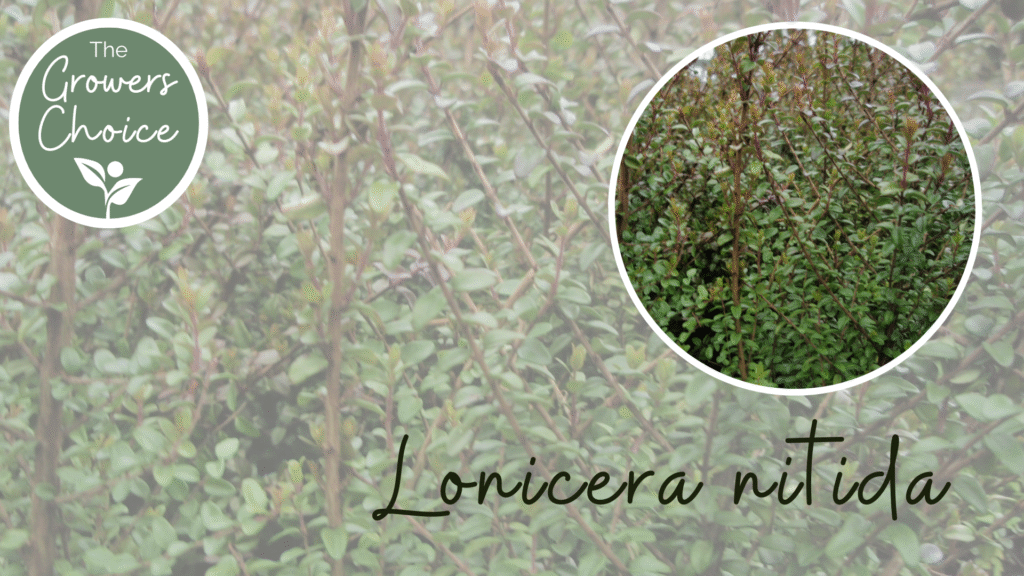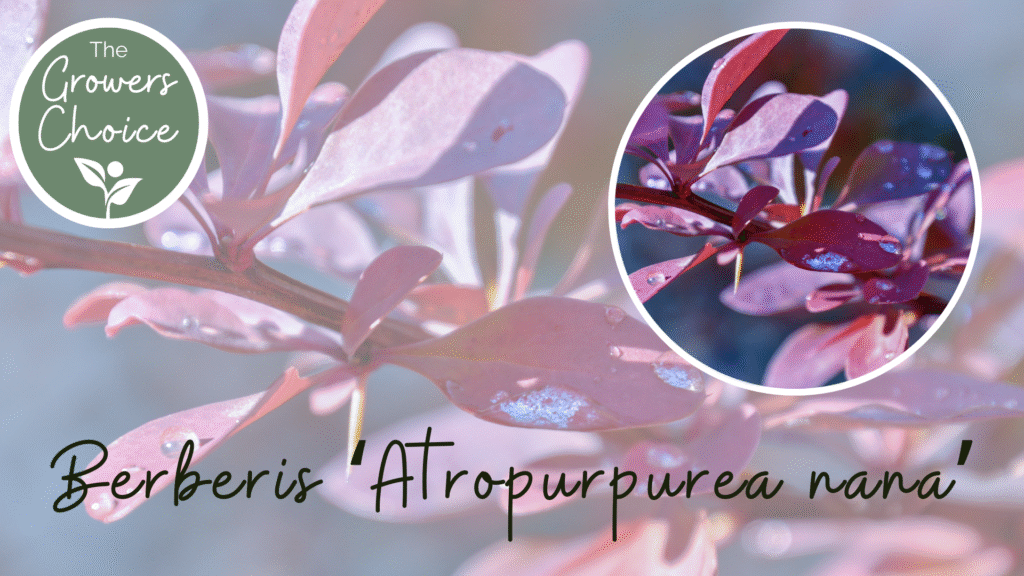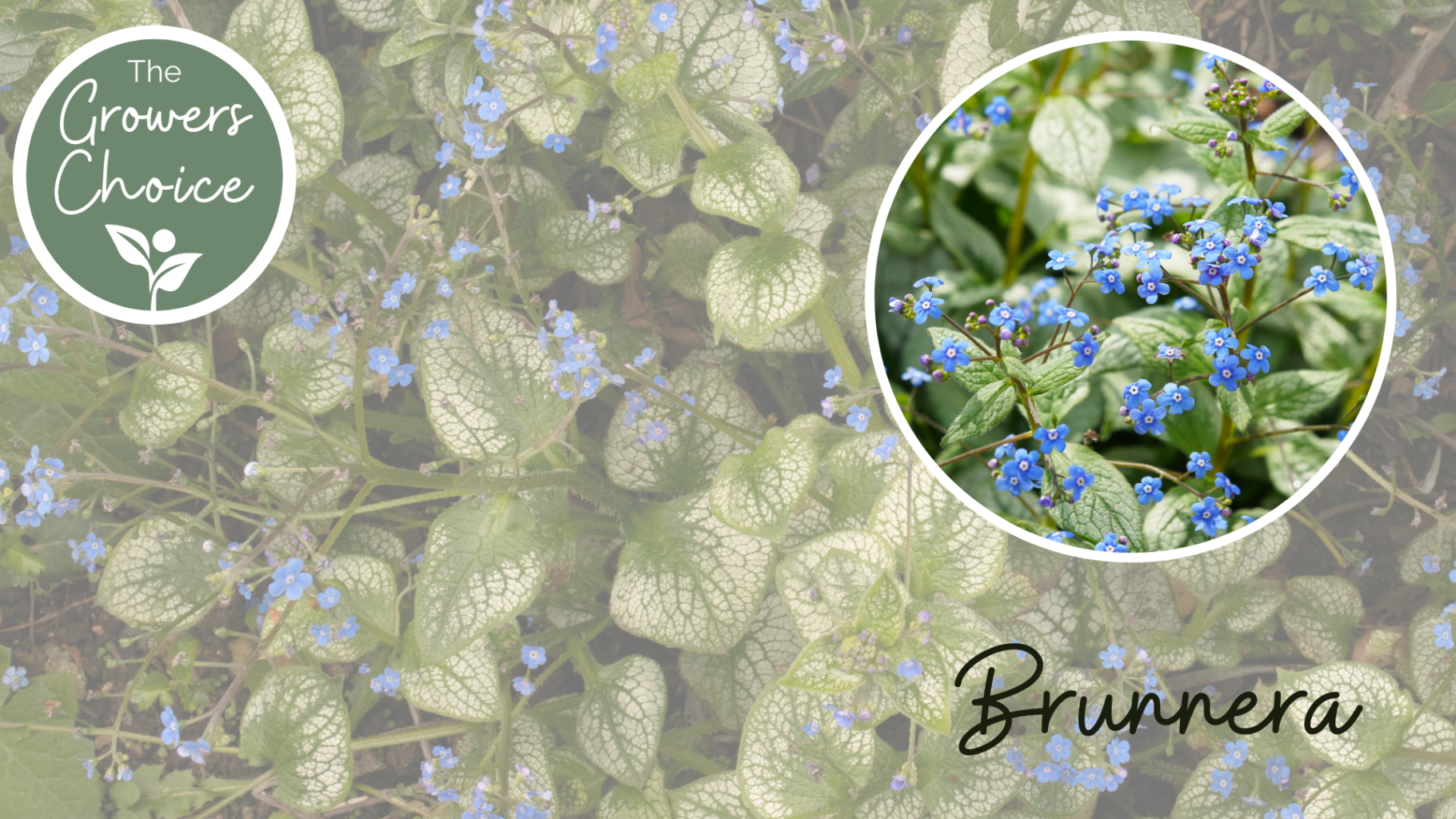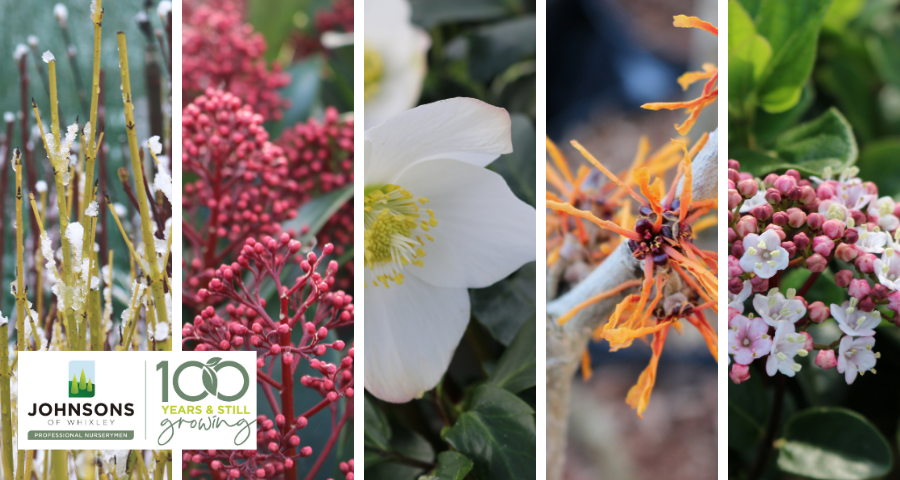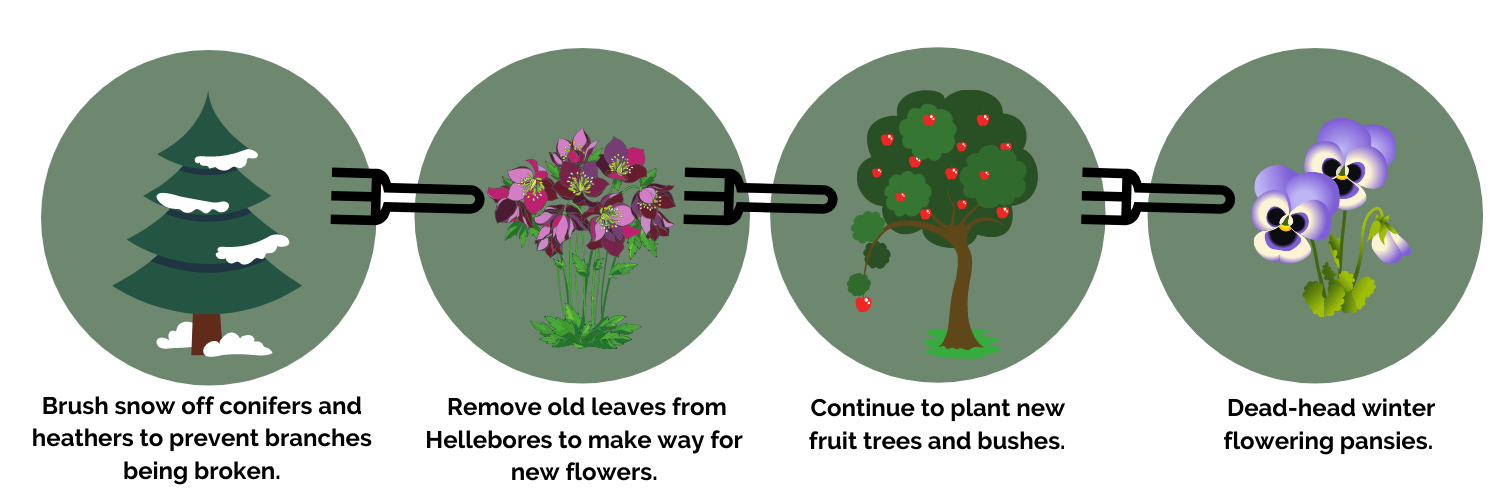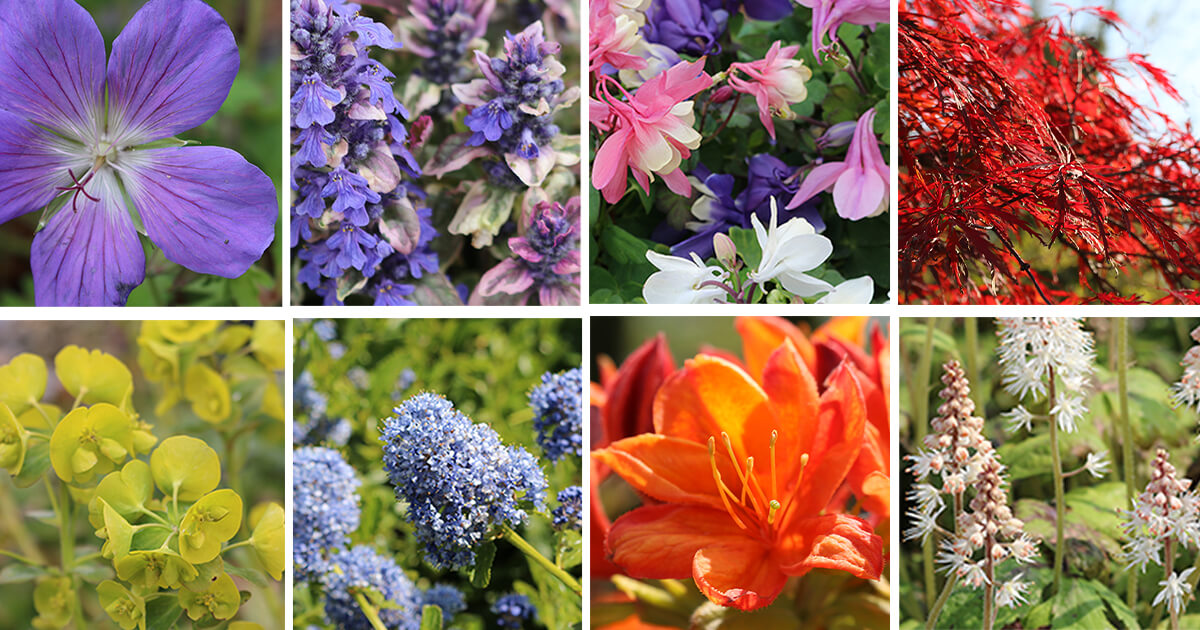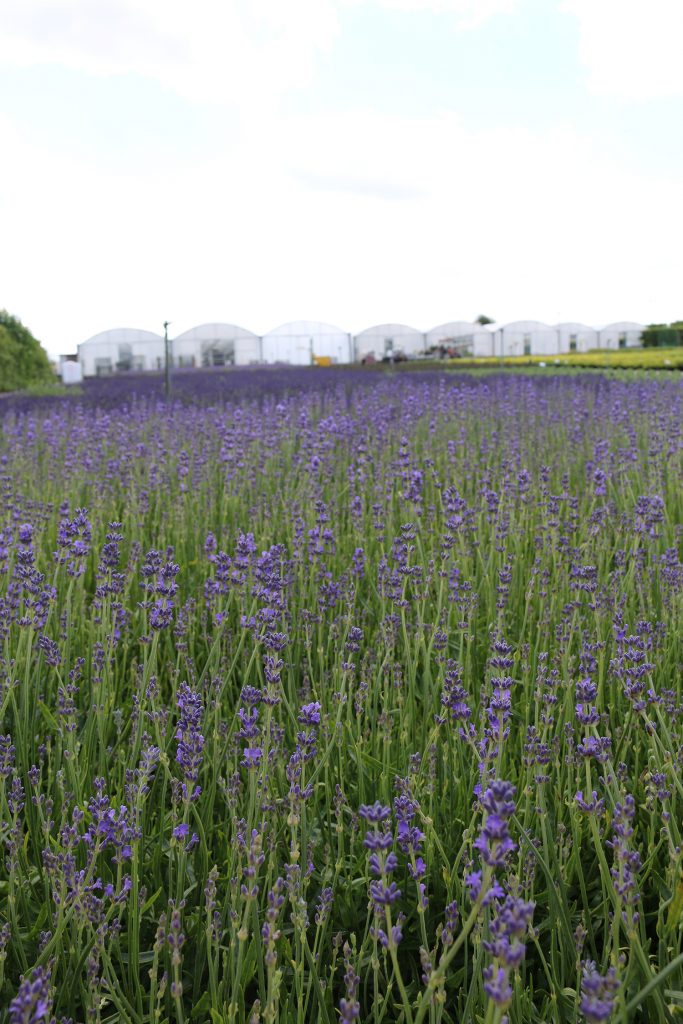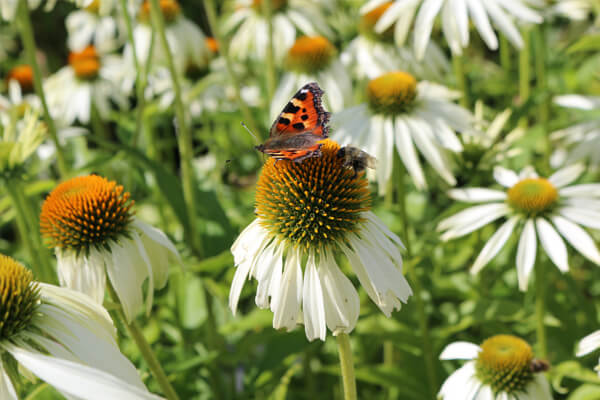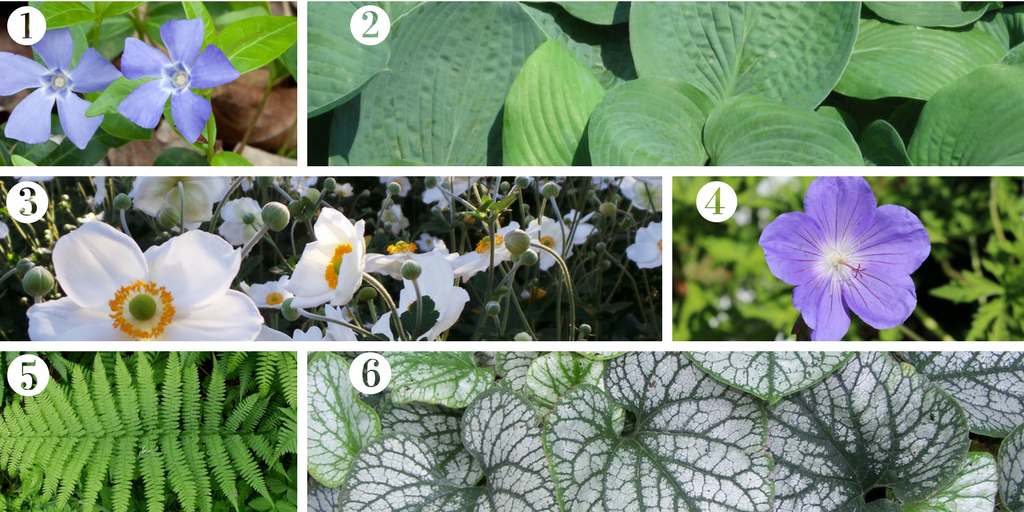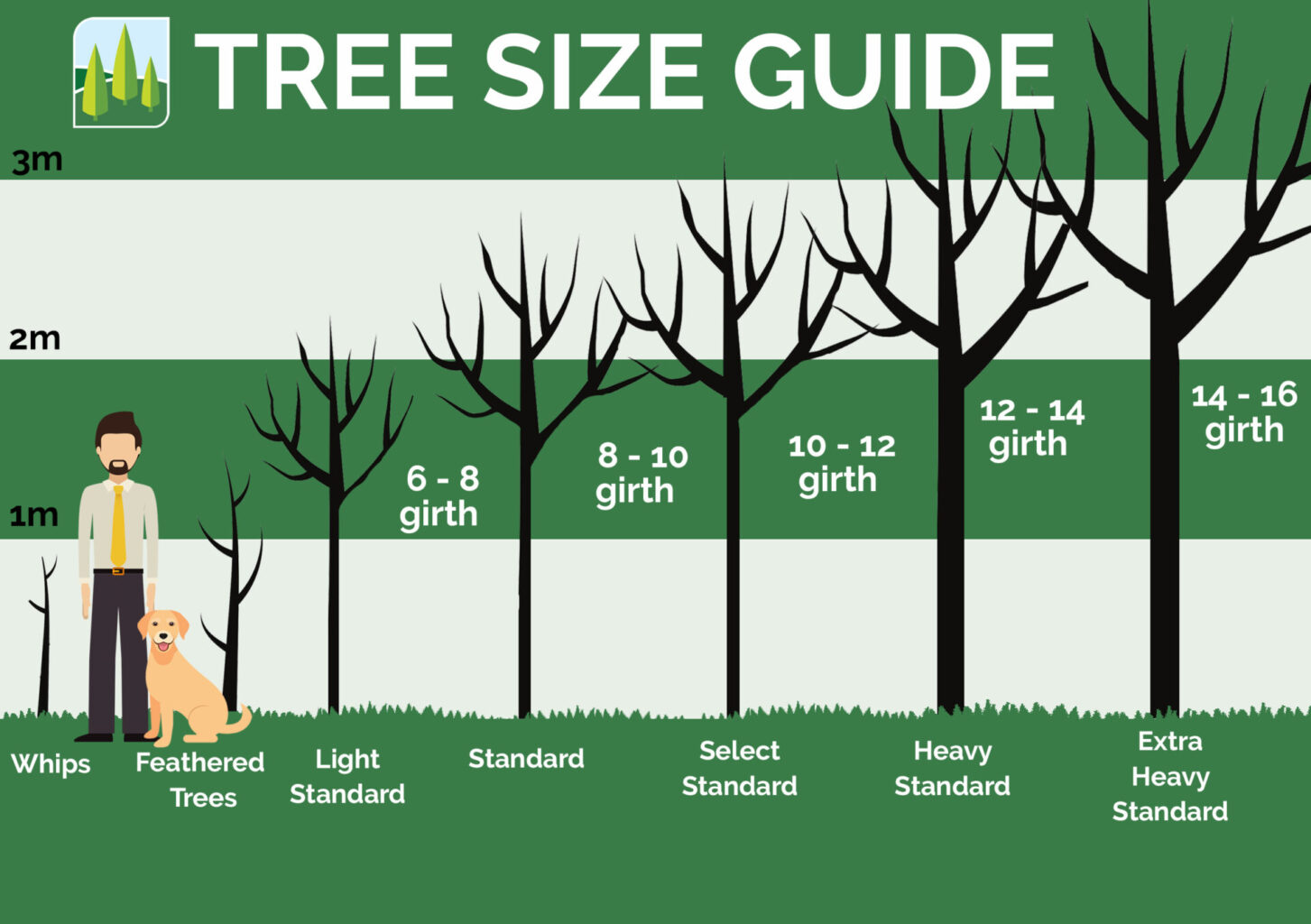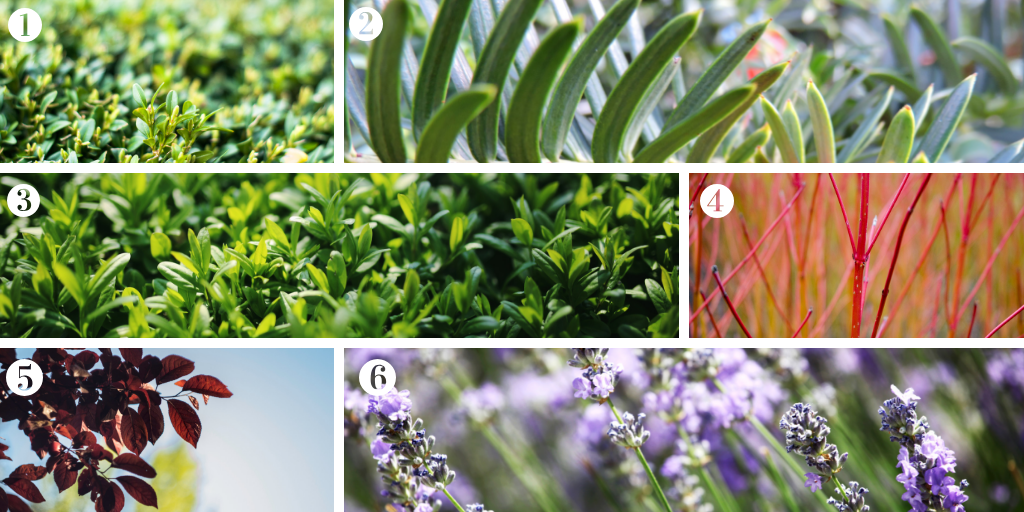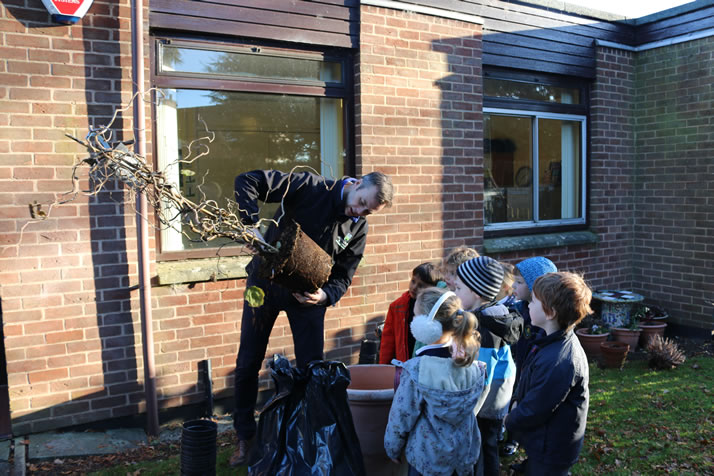As spring unfolds, the garden truly begins to stir — buds swell, blossom appears, and new foliage unfurls. April is a beautiful transitional moment, with shrubs and herbaceous plants like Clematis, Pieris, Spiraea, and Brunnera coming into bloom. Below, we’ve gathered some of our favourite flowering plants for April interest to bring colour, structure, and life to your garden projects.
Amelanchier lamarckii

A graceful small tree or large shrub that offers beauty in every season. In early spring, it produces delicate, star-shaped white flowers that shimmer against young bronze foliage. As the season progresses, the leaves mature to a rich green, before turning fiery shades of red and orange in autumn. In summer, small, dark purple berries provide a feast for birds — making this both a stunning and wildlife-friendly addition to any garden.
🗓️ Flowers: March – April
☀️ Position: Full sun to partial shade
📏 Height: Up to 10m (depending on variety)
🌱 Soil: Fertile, moist but well-drained, neutral to acidic
📦 Pot Sizes Available: 2L, 3L, 5L, 10L, 12L+ (variety-dependent)
———————————————————————————————
Bergenia varieties such as ‘Silberlicht’ and cordifolia ‘Purpurea’

A tough and reliable perennial, Bergenia forms a low, leafy clump of large, leathery evergreen leaves that provide attractive ground cover year-round. In early spring, upright stems emerge topped with clusters of pink or magenta flowers — a vital early source of pollen for bees and other pollinators. As the seasons shift, the foliage often takes on rich tones of red and bronze, adding extra seasonal interest.
🗓️ Flowers: March – April
☀️ Position: Full sun to partial shade
📏 Height: Up to 0.6m (depending on variety)
🌱 Soil: Suitable for most soil types
📦 Pot Sizes Available: 2L, 3L (variety-dependent)
———————————————————————————————
Brunnera varieties such as macrophylla ‘Jack Frost’

A true gem for shady spots, Brunnera lights up spring borders with sprays of tiny, sky-blue flowers that resemble forget-me-nots. These delicate blooms rise above a lush carpet of heart-shaped leaves, often dusted in silver or etched with green veining, depending on the variety. A beautiful and reliable groundcover plant that brings brightness and texture to dappled shade.
🗓️ Flowers: April – May
☀️ Position: Partial shade
📏 Height: Up to 0.4m (depending on variety)
🌱 Soil: Fertile, humus-rich, moist, well-drained
📦 Pot Sizes Available: 2L, 3L (variety-dependent)
———————————————————————————————
Chaenomeles varieties such as ‘Jet Trail, ‘Crimson & Gold’ & ‘Nivalis’

A striking early-flowering shrub, Chaenomeles brings vibrant colour to walls, fences, and borders just as the garden begins to wake. Its open, cup-shaped flowers — in shades of pink, red, or white — appear from March onwards, often before the leaves, creating a bold splash of spring colour. It’s a great choice for training against a wall or allowing to grow freely as a compact, informal shrub.
🗓️ Flowers: March – May
☀️ Position: Full sun to partial shade
📏 Height: Up to 2.5m
🌱 Soil: Moderately fertile, moist but well-drained
📦 Pot Sizes Available: 2L, 3L, 3LD, 5L (variety-dependent)
———————————————————————————————
Camellia varieties

A timeless favourite for early-season colour, Camellia is a striking evergreen shrub that brings glossy, deep green foliage and exquisite blooms in shades of pink, red, and white. Many varieties are already in bud by early February, ready to open just when the garden needs it most. Ideal for a partially shaded border or a statement container, Camellias offer structure and elegance through every season.
🗓️ Flowers: February – April (depending on variety)
☀️ Position: Partial shade (avoid east-facing spots)
📏 Height: Up to 4m+ (variety-dependent)
📐 Width: Up to 2.5m
🌱 Soil: Moist but well-drained, humus-rich, acidic
📦 Pot Sizes Available: 2L, 3L, 5L, 7.5L, 10L, 20L+ (variety-dependent)
———————————————————————————————
Clematis varieties such as ‘early sensation’

Clematis brings elegance and vertical interest to the garden, with varieties that bloom from early spring through late summer. Some begin flowering as early as April — particularly Clematis alpina, macropetala, and early montana types — offering a soft cascade of nodding, bell-shaped or starry blooms in shades of blue, pink, white, and purple. Ideal for covering fences, arches, or obelisks, they add colour and height just as the garden comes alive.
🗓️ Flowers: April onwards (depending on the variety)
☀️ Position: Sun or partial shade (roots kept cool)
📏 Height: Varies widely – up to 3–4m+ depending on type
🌱 Soil: Moist, well-drained, fertile soil
📦 Pot Sizes Available: 2L, 3L (variety-dependent)
———————————————————————————————
Corylopsis pauciflora

A delicate and enchanting shrub, Corylopsis lights up the early spring garden with softly scented, pale yellow, bell-like flowers that dangle from bare branches in March and April. As the blooms fade, bronzed, hazel-like leaves emerge and mature to a fresh, bright green, adding texture and movement to partially shaded borders.
🗓️ Flowers: March – April
☀️ Position: Partial shade
📏 Height: Up to 1.5m (depending on variety)
📐 Width: Up to 1.5m
🌱 Soil: Fertile, moist, well-drained, acidic
📦 Pot Sizes Available: 10L, 20L (variety-dependent)
———————————————————————————————
Choisya varieties such as ‘Aztec Pearl’, ‘Sundance’ & ‘White Dazzler’

An evergreen favourite, Choisya adds year-round structure and spring fragrance to the garden. In April, clusters of star-shaped, citrus-scented white flowers emerge against glossy green or golden-yellow foliage, depending on the variety. Easy to grow and low maintenance, it’s perfect for borders, hedging, or containers, offering both beauty and resilience.
🗓️ Flowers: April – May (with some varieties reblooming later)
☀️ Position: Full sun to partial shade
📏 Height: Up to 2.5m (depending on variety)
📐 Width: Up to 2m
🌱 Soil: Well-drained soil; tolerates a range of types
📦 Pot Sizes Available: 2L, 3L, 5L, 10L+ (variety-dependent)
———————————————————————————————
Deutzia varieties like ‘Mont Rose’ and ‘Rosea’

A charming deciduous shrub that bursts into bloom in late spring, Deutzia is loved for its frothy clusters of star-shaped white or pink flowers. These lightly scented blooms often smother the arching stems, creating a soft, romantic effect perfect for mixed borders or cottage-style planting. After flowering, its neat green foliage keeps the plant looking fresh and tidy through summer.
🗓️ Flowers: May – June (some varieties may start in late April)
☀️ Position: Full sun to partial shade
📏 Height: Up to 2m (depending on variety)
📐 Width: Up to 1.5m
🌱 Soil: Fertile, well-drained soil
📦 Pot Sizes Available: 2L, 3L, 5L (variety-dependent)
———————————————————————————————
Dicentra varieties such as ‘Bleeding Heart’

Delicate yet striking, Dicentra is a spring-flowering perennial treasured for its graceful, arching stems adorned with heart-shaped flowers in soft pink or pure white. Blooming above finely divided, fern-like foliage, it brings a romantic, cottage-garden charm to shady borders and woodland settings. A reliable favourite that quietly steals the show in spring.
🗓️ Flowers: April – June (depending on variety)
☀️ Position: Partial shade (can tolerate full shade)
📏 Height: Up to 0.75m (depending on variety)
📐 Width: Up to 0.6m
🌱 Soil: Moist, fertile, humus-rich, well-drained
📦 Pot Sizes Available: 2L, 3L (variety-dependent)
———————————————————————————————
Erysimum ‘Bowles’s mauve’

A long-flowering favourite, Erysimum ‘Bowles’s Mauve’ offers months of soft mauve blooms held on upright stems above evergreen, grey-green foliage. This compact perennial starts flowering in early spring and can continue well into autumn, making it a reliable source of colour and pollinator interest. Ideal for borders, containers, or gravel gardens, it thrives in full sun and is wonderfully low maintenance.
🗓️ Flowers: March – October (with regular deadheading)
☀️ Position: Full sun
📏 Height: Up to 0.75m
📐 Width: Up to 0.6m
🌱 Soil: Well-drained, moderately fertile soil
📦 Pot Sizes Available: 2L, 3L (subject to availability)
———————————————————————————————
Euphorbia wulfenii

A bold architectural perennial, Euphorbia wulfenii makes a striking statement with its towering stems topped by huge, domed heads of yellow-green flowers with distinctive bronze centres. Blooming from late March into May, the eye-catching blooms rise above a base of bluish-green, evergreen foliage. Perfect for adding height, texture, and contrast to sunny borders or gravel gardens.
🗓️ Flowers: Late March – May
☀️ Position: Full sun
📏 Height: Up to 1.2m+
📐 Width: Up to 1m
🌱 Soil: Well-drained, light to moderately fertile soil
📦 Pot Sizes Available: 2L (subject to availability)
⚠️ Note: The milky sap can be an irritant — wear gloves when pruning.
———————————————————————————————
Exochorda x macrantha varieties such as ‘The Bride’ & ‘Niagara’

A show-stopping spring shrub, Exochorda — often called ‘The Bride’ — is loved for its profusion of pure white, saucer-shaped flowers that cover its arching branches in April and May. The blooms arrive in such abundance they almost obscure the fresh green foliage beneath, creating a cascading, bridal veil effect. Graceful, easy to grow, and ideal for adding brightness to mixed borders.
🗓️ Flowers: April – May
☀️ Position: Full sun to light shade
📏 Height: Up to 2.5m (depending on variety)
📐 Width: Up to 2m
🌱 Soil: Well-drained, fertile soil
📦 Pot Sizes Available: 3L, 5L+ (subject to variety and availability)
———————————————————————————————
Forsythia ‘Lynwood Gold’
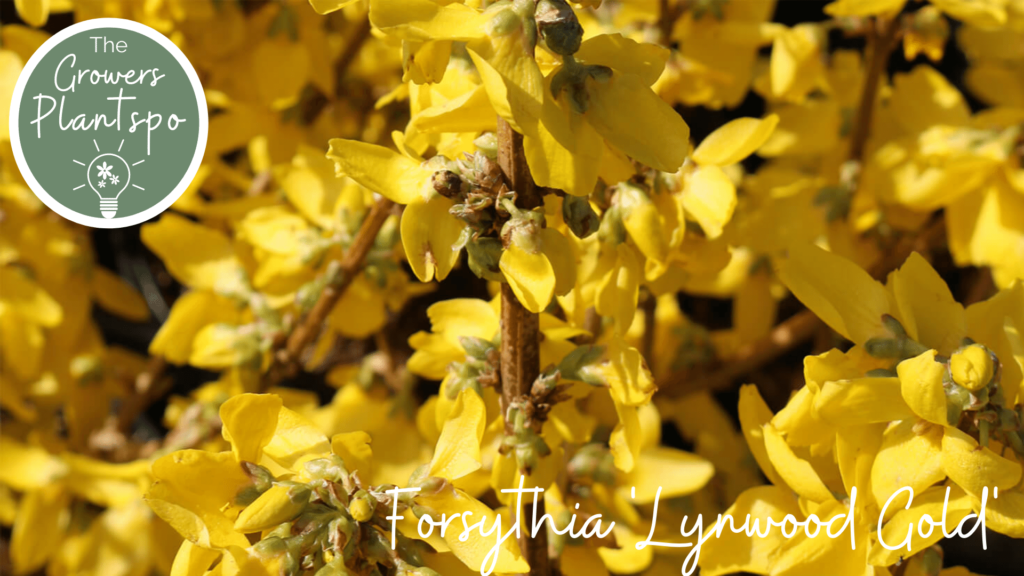
A classic herald of spring, Forsythia ‘Lynwood Gold’ bursts into brilliant golden-yellow bloom in March and April, often before its leaves emerge. Its upright stems become smothered in vivid flowers, lighting up borders, hedgerows, or walls with cheerful colours. Once the flowering finishes, fresh green foliage carries the interest into summer.
🗓️ Flowers: March – April
☀️ Position: Full sun to light shade
📏 Height: Up to 2.5m
📐 Width: Up to 2.5m
🌱 Soil: Any moist, well-drained soil
📦 Pot Sizes Available: 3L, 5L+ (subject to variety and availability)
———————————————————————————————
Kerria japonica ‘Pleniflora’

A cheerful and easy-going shrub, Kerria is a fantastic choice for brightening up a shady spot. From March through May, it produces a profusion of pom-pom-like double yellow flowers that bring a splash of sunshine to borders and woodland-style gardens. Its graceful, arching stems and fresh green foliage add movement and texture even after the blooms fade.
🗓️ Flowers: March – May
☀️ Position: Full sun to partial shade
📏 Height: Up to 2m
🌱 Soil: Fertile, well-drained soil
📦 Pot Sizes Available: 10L (variety-dependent and subject to availability)
———————————————————————————————
Osmanthus x burkwoodii & delavayi

A wonderfully fragrant evergreen shrub, Osmanthus × burkwoodii produces clusters of small, white, tubular flowers in mid to late spring, filling the air with a sweet, jasmine-like scent. Its neat, glossy dark green leaves provide year-round structure, making it an excellent choice for hedging, topiary, or as a stand-alone specimen in borders.
🗓️ Flowers: April – May
☀️ Position: Full sun to partial shade
📏 Height: Up to 3m (can be clipped to size)
📐 Width: Up to 2.5m
🌱 Soil: Moist but well-drained, fertile soil
📦 Pot Sizes Available: 3L, 5L, 10L+ (subject to variety and availability)
———————————————————————————————
Prunus Kojo-no-Mai

A compact flowering cherry that delivers a burst of early spring charm, Prunus ‘Kojo-no-mai’ features masses of delicate, pale pink flowers that open from deep crimson buds on zig-zagging bare branches. After flowering, bright green leaves emerge and later turn rich shades of orange and red in autumn. Its tidy size and elegant shape make it ideal for small gardens, patio pots, or Japanese-style plantings.
🗓️ Flowers: March – April
☀️ Position: Full sun
📏 Height: Up to 2.5m
📐 Width: Up to 2m
🌱 Soil: Moist, well-drained, moderately fertile soil
📦 Pot Sizes Available: 3L, 5L, 10L (subject to variety and availability)
———————————————————————————————
Magnolia x soulangeana and the variety ‘Susan’

A true spring showstopper, Magnolia enchants with its large, goblet- or star-shaped blooms that appear on bare branches before the leaves emerge. Flowering from March into April, varieties range from soft pinks and creamy whites to deep purples, making it a striking focal point in any garden. Whether grown as a statement tree or a compact shrub, magnolias bring timeless elegance and early-season drama.
🗓️ Flowers: March – April (variety dependent)
☀️ Position: Full sun to light shade (sheltered from cold winds)
📏 Height: From 2m to 8m+ depending on variety
📐 Width: Varies – often spreading with age
🌱 Soil: Moist, well-drained, slightly acidic to neutral
📦 Pot Sizes Available: 5L, 7.5L, 10L, 20L+ (variety-dependent)
———————————————————————————————
Pieris varieties such as ‘Passion’

A stunning evergreen shrub that brings year-round interest, Pieris japonica shines in spring with cascading clusters of bell-shaped white or pink flowers. These elegant blooms often emerge alongside vivid red or bronze new growth, creating a striking contrast against its glossy green foliage. Perfect for borders, containers, or woodland-style gardens, Pieris thrives in acidic soil and adds structure, colour, and texture through the seasons.
🗓️ Flowers: March – May
☀️ Position: Partial shade (tolerates full sun if soil remains moist)
📏 Height: Up to 2.5m (depending on variety)
📐 Width: Up to 2m
🌱 Soil: Moist, well-drained, humus-rich acidic soil
📦 Pot Sizes Available: 2L, 3L, 5L, 10L+ (subject to variety and availability)
———————————————————————————————
Ribes sanguineum varieties such as ‘King Edward’, ‘Pulborough Scarlet’

A classic early spring shrub, Ribes sanguineum bursts into bloom from March with hanging clusters of rich pink or red flowers that attract bees and other pollinators. Its lobed, aromatic foliage emerges shortly after, creating a soft, textured backdrop that lasts through summer. A fantastic choice for informal borders, wildlife-friendly gardens, or adding a splash of colour to a mixed hedge.
🗓️ Flowers: March – April
☀️ Position: Full sun to partial shade
📏 Height: Up to 2m
📐 Width: Up to 1.5m
🌱 Soil: Well-drained, moderately fertile soil
📦 Pot Sizes Available: 3L, 5L (subject to variety and availability)
———————————————————————————————
Salix varieties with catkins such as ‘Mount Aso’

Salix varieties, especially dwarf types like Salix gracilistyla ‘Mount Aso’ or Salix caprea ‘Kilmarnock’, offer early-season charm with their silky catkins that appear on bare stems in late winter to early spring. These soft, silver-pink or golden buds are a delight for pollinators and bring gentle texture to the garden. Many forms have a neat, compact habit, making them perfect for pots, borders, or focal points in smaller spaces.
🗓️ Flowers: February – April (depending on variety)
☀️ Position: Full sun
📏 Height: From 1m to 2.5m (depending on form)
📐 Width: Up to 2m
🌱 Soil: Moist, well-drained soil (tolerates heavier ground)
📦 Pot Sizes Available: 3L, 5L, 10L+ (subject to variety and availability)
———————————————————————————————
Skimmia varieties such as ‘Rubella’ and ‘Kew Green’

A compact, evergreen shrub with year-round appeal, Skimmia is valued for its glossy, deep green foliage and fragrant clusters of creamy-white spring flowers. Many varieties produce showy red or pink buds that hold through winter before bursting into bloom — a welcome sign of the changing seasons. Female plants may also bear glossy red berries in autumn if a male pollinator is nearby. Ideal for shady borders, containers, or underplanting larger shrubs.
🗓️ Flowers: April – May (with colourful buds often appearing earlier)
☀️ Position: Partial to full shade
📏 Height: Up to 1.2m (depending on variety)
📐 Width: Up to 1.2m
🌱 Soil: Moist, well-drained, humus-rich, slightly acidic soil
📦 Pot Sizes Available: 2L, 3L, 5L, 10L (subject to variety and availability)
———————————————————————————————
Viburnum varieties such as ‘tinus’ and ‘bod Dawn’

Viburnum is a versatile genus offering both evergreen and deciduous options, with many varieties blooming in early to mid-spring. From the soft pink clusters of Viburnum x bodnantense to the snowy white domes of Viburnum opulus, these shrubs bring beauty, structure, and fragrance to borders and hedges. Many varieties also offer attractive autumn colour and showy berries, making them a great all-season choice.
🗓️ Flowers: March – May (depending on variety)
☀️ Position: Full sun to partial shade
📏 Height: From 1.5m to 3m+ (variety-dependent)
📐 Width: Up to 2.5m
🌱 Soil: Moist, well-drained soil; tolerates most types
📦 Pot Sizes Available: 3L, 5L, 10L+ (subject to variety and availability)
———————————————————————————————
Vinca varieties such as ‘major’, minor’ and ‘atropurpurea’

A hardy, ground-hugging evergreen, Vinca is perfect for carpeting shady spots with glossy green foliage and cheerful star-shaped flowers. Blooming from early spring, its violet-blue, purple, or white blooms add a fresh splash of colour when little else is flowering. Tough, low maintenance, and ideal for weed suppression, Vinca minor and Vinca major are perfect for underplanting trees, edging paths, or covering awkward corners.
🗓️ Flowers: March-May (often with repeat blooms later in the year)
☀️ Position: Partial shade to full shade
📏 Height: Up to 0.2–0.3m (spreads widely)
📐 Spread: Can trail or spread 1m+
🌱 Soil: Any moist, well-drained soil
📦 Pot Sizes Available: 2L, 3L (subject to variety and availability)
 Soil: any but very dry soil
Soil: any but very dry soil
 Pot size: 2L, 3L, 5L (depending on variety and subject to availability)
Pot size: 2L, 3L, 5L (depending on variety and subject to availability)
———————————————————————————————
1) Garden Design Tips:
-
Layering for impact: Place taller structural shrubs like Amelanchier or Magnolia at the back, with mid-height interest from Choisya, Pieris, or Viburnum, and lower plants like Brunnera, Vinca, or Erysimum at the front.
-
Colour pairing: Combine soft spring tones — pink Camellias, white Spiraea, and blue Pulmonaria — for a calm, romantic palette.
-
Scent zones: Cluster fragrant plants near doorways or seating areas (Osmanthus, Skimmia, Daphne, Viburnum bodnantense).
2) Pollinator-Friendly Picks:
🐝 Pulmonaria, Brunnera, Erysimum, Ribes, Skimmia, Camellia, and Corylopsis are all great for early pollinators.
Click here for more monthly plantspo









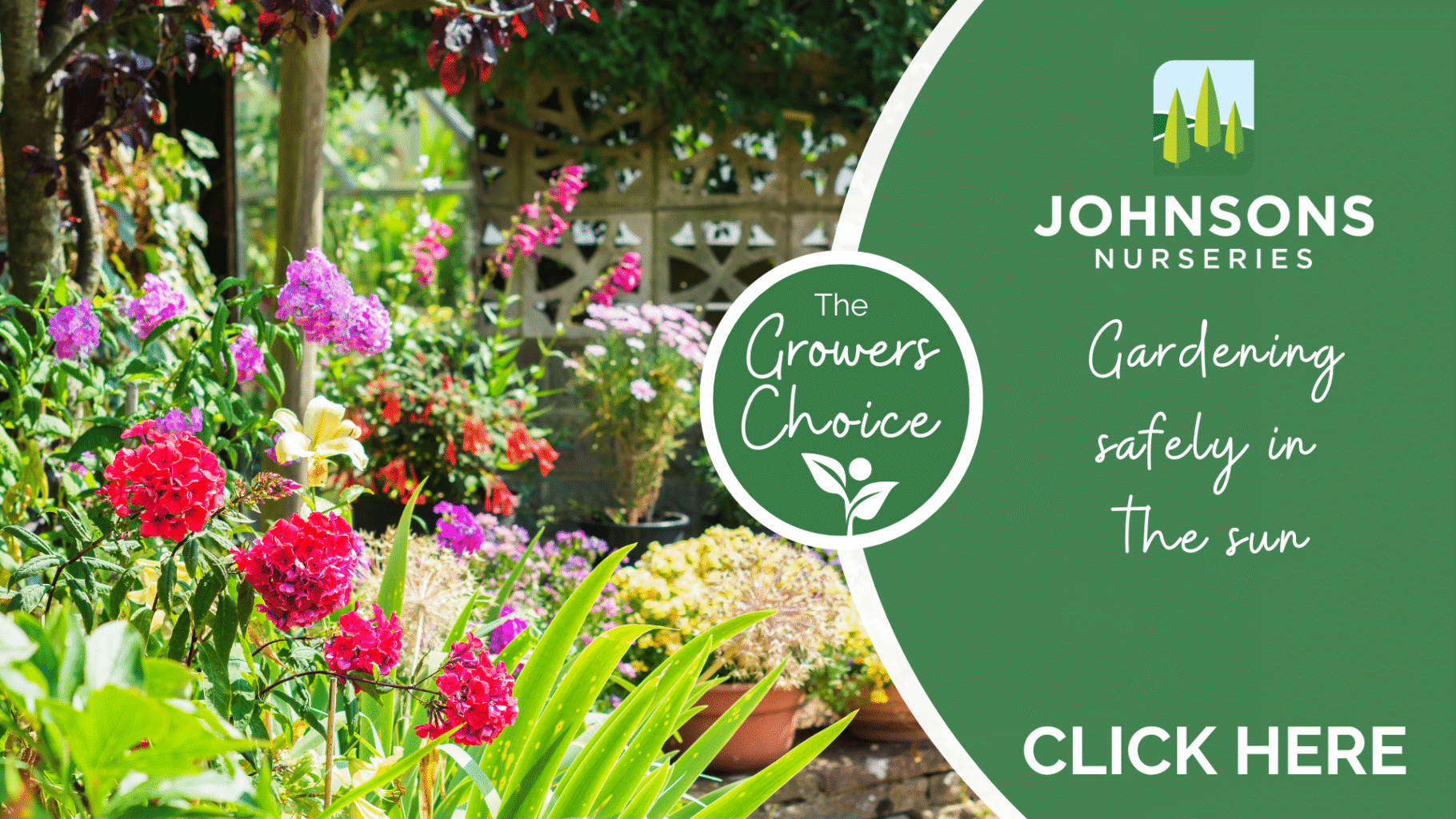



 Prune strong growing Buddleias down to about 45cm. for a good show in the summer. Prune down to 60-80cm for denser but weaker overall growth.
Prune strong growing Buddleias down to about 45cm. for a good show in the summer. Prune down to 60-80cm for denser but weaker overall growth.






 Height: Up to 75cm
Height: Up to 75cm Soil: Most soil types, except dry or boggy conditions
Soil: Most soil types, except dry or boggy conditions








 Flowers: May – June
Flowers: May – June Position: Full sun
Position: Full sun



 Position: Full sun or partial shade
Position: Full sun or partial shade






















 Position: Full sun – partial shade
Position: Full sun – partial shade Height: Up to 3m (depending on the variety)
Height: Up to 3m (depending on the variety)

























 Flowers: End of March- April – September
Flowers: End of March- April – September










 Soil: well-drained soil
Soil: well-drained soil














 Position: Full sun – Partial shade
Position: Full sun – Partial shade




























































